To hear an extract of Tripe + Drisheen’s interview with Patrick Hough, remember to press play above.
It’s very fitting to walk into the clanking, echoing hangar of the Marina Market to meet artist Patrick Hough, who is screening his latest film, The Two Faces of Tomorrow, as part of Cork Film Festival.
The events space of the Marina Market, located in the cavernous former Ford factory off Centre Park Road, has been converted with the assistance of the National Sculpture Factory into a cinema of sorts, but one which itself is acting as a sculptural installation, inviting the audience into a stark, industrial reimagining of a palace of dreams the better to view Hough’s eerie, deeply beautiful 40-minute art film.
To get into the Marina Market, you even walk past a gigantic grain silo, begreened by years of algal growth.
The Two Faces of Tomorrow is a film about algae.
Hough is seated at his laptop while all around him, last-minute preparations are afoot: this interview is on Thursday but by the time you read this, there will be only two Saturday night screenings of his film left. If you can, you really should go and see it.
National Sculpture Factory staff are putting the finishing touches to the lighting, to the 5.1 Surround Sound system that will bathe viewers in the film’s spine-tingling score.
“It’s so rare to be able to stage a film on this scale and in a space that’s outside of a cinema,” Hough says, leading me to where cinema seating for 100 stands isolated in the centre of the huge space.
“It really suits the tone of the film, which is all about technology and our relationship to ecology. To be in this bleak, hard space to watch a film that’s very intimate and personal is a really nice contrast in a way, but also fitting.”
Hough, in his early thirties, was born in Galway but lives and works in London; he graduated from his BA in Fine Art Media from NCAD in 2011 and completed an MA with the Royal College of Art in London two years later. For years, he’s used film alongside sculpture, photography, sound and light installations to explore themes relating to archaeology, geology and, increasingly, ecology.
The Two Faces of Tomorrow is his latest work, so very green and fresh that it’s only really been fully completed within the past week.
Voiced diary-style by a fictional researcher, the film takes the viewer through 3.5 billion years of the history of algae on planet earth, from museum fossil records to Roman baths, to modern-day laboratories where the nutritional and biofuel potentials of algae are being exploited.
“At its core, the film is about algae and how algae have shaped life on earth, from the very air we breathe through to both the near and deep future, where algae might take us to different planets,” Hough says.
However thoroughly researched, though, a National Geographic documentary this most certainly is not: The Two Faces of Tomorrow comes across almost as an unsettling sci-fi, due in no small part to some of its surreal laboratory locations.
"Visually, they were just so cinematic,” Hough says. “They looked like the most constructed sci-fi sets, just because of the lighting, because different algae respond differently to different light.”
“The lab in Vienna was the size of a football field, full of these glass tanks; it could be a set from a James Bond film, the arch-villains lair.”
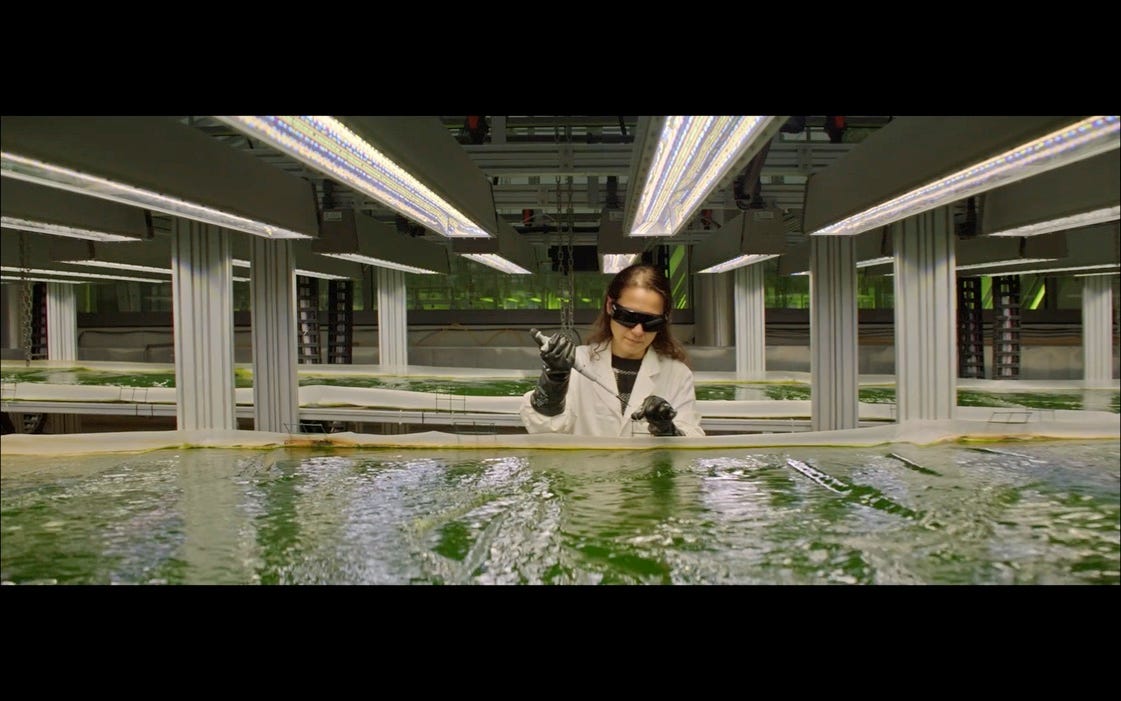
“Airbus built the biofuel lab in Munich and it’s part of the technical university. It has these rivers of algae, cycling the liquid, and the liquid is gradually becoming a richer and richer green; when the level of green becomes really intense, they know they can harvest it.”
As well as the locations, Hough’s script, written by novelist Daisy Hildyard, with whom he has worked on other projects, adds to his experimental “documentary fiction” approach.
“I’m an artist filmmaker, so I’m much more interested in using the framework of artists’ moving image to find different ways of entering into a subject,” he says.
“Fiction is a useful framework because you can bring in other ways of thinking about images, other ways of looking at the world other than sticking to a linear, documentary path. I find it a really exciting and generative space to get people thinking about things in ways they wouldn’t normally be drawn into.”
Sound and vision
Hough gets me to stand amongst the cinema seats and switches on the sound to demonstrate the surround sound system: goosebumps immediately ensue. The otherworldly score is very definitely central to the film’s impact.
Hough enlisted all-female London electronic drone choir NYX and their musical director Sian O’Gorman to create the film’s music.
“I went to one of their gigs when I was in the early stages of the research for this project, and it was so enveloping,” he says. “I thought to myself, that sounds like the voice of a non-human organism that’s speaking to me from millions of years ago.”
And so the interweaving harmonies of NYX are used to give a voice to the algae in the film.
“The algae are narrating their own story through song. But again, I’m not bound by the rules of a documentary framework, so I can have the algae singing in my film if I want to,” Hough says with a little smile.
Green concerns
As the film unfolds, it becomes apparent that it’s not only a film about algae but a film about humans: about our blind greed for increasingly violent forms of extraction and exploitation. It is, Hough says, a story that “becomes about our relationship with non-human life and what that means for the crises that face us now.”
Research into algae as biofuel is being led by companies like ExxonMobil, and by military researchers, he points out: in his film, there is no utopian vision whereby algae solve global warming, energy demands and world hunger against an unaltered back-drop of late stage capitalism.
Algal blooms from agricultural run-off are an increasingly toxic threat of the Anthropocene.
Hough’s very timely warnings come as we watch the much-hyped COP26 climate summit descend into a pantomime of disaster capitalism populated by circling energy lobbyists. With all the good will in the world, what can we truly change?
Algae, despite their enormous power and potential, certainly can’t change a broken human system; only we can do that.
“These solutions that are being explored also have unintended consequences,” Hough says. “The systemic problems are still there. You always have to question what on the surface seems like the promise of a utopian solution. Because there is no simple, straight solution. That’s kind of what my film is about.”
The Two Faces of Tomorrow by Patrick Hough is being screened as part of Cork International Film Festival 2021 in The Event Space at the Marina Market, Centre Park Road at 8pm and 10pm on Saturday 13. Tickets are available here.



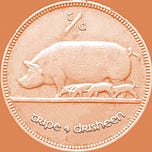



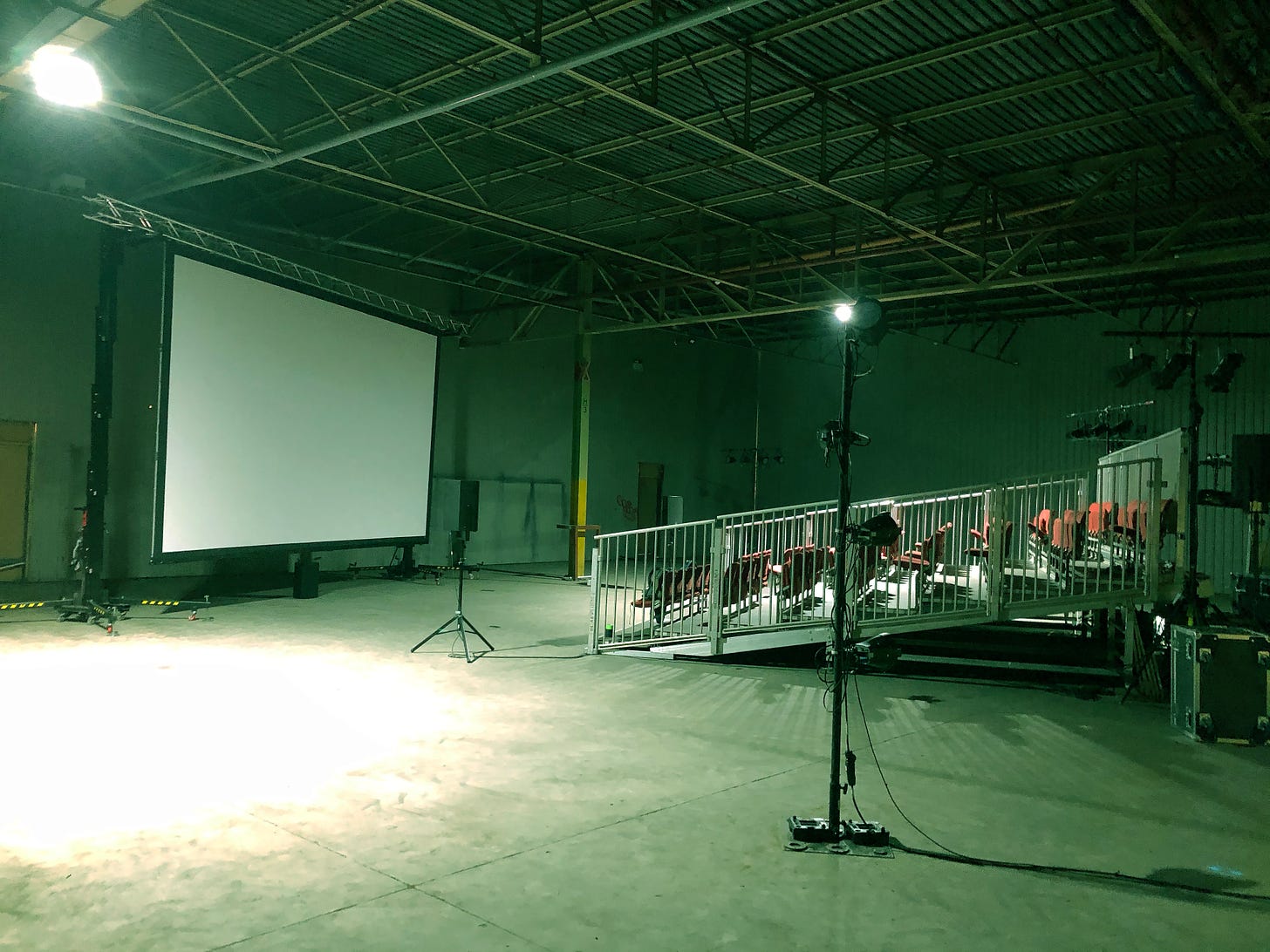


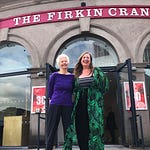

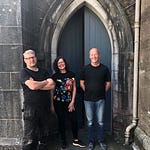


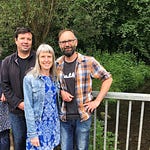

Share this post